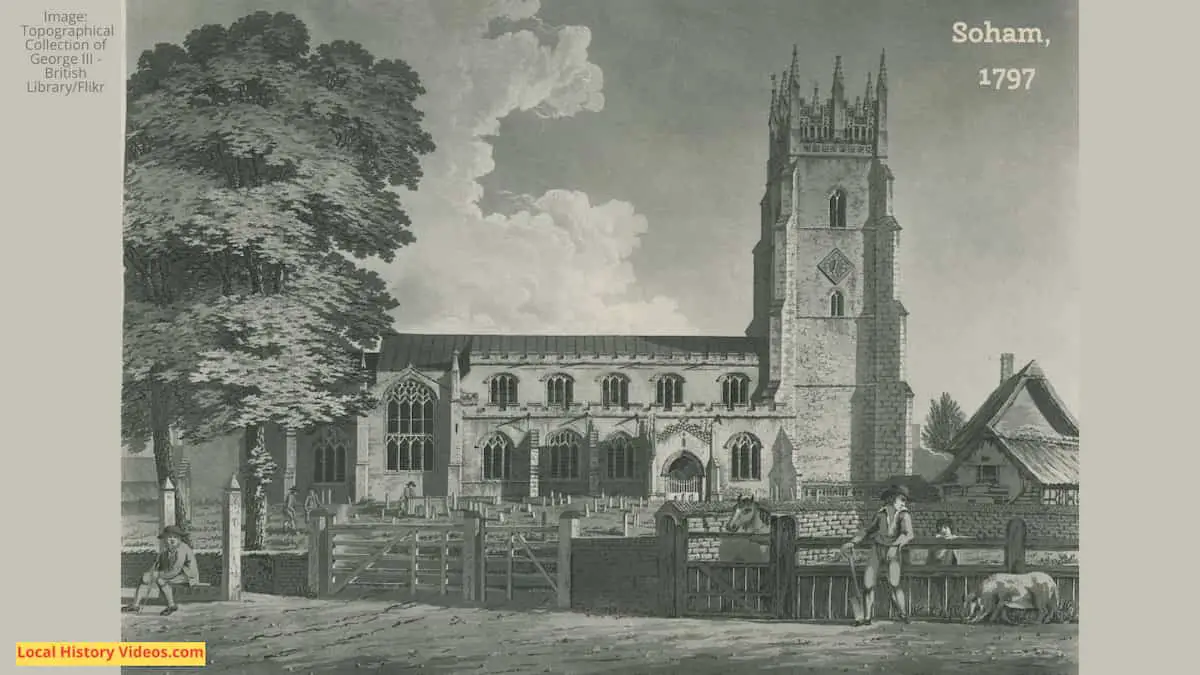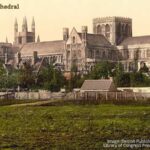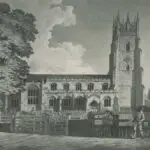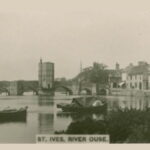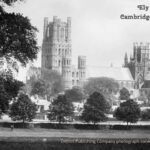Glimpse history through old images of Soham, Cambridgeshire, England.
Old Photos of Soham
James at epipolar compiled this clever video, showing old photographs of local streets and buildings many decades ago, and then showing a photo of the same location in 2017.
Soham – Then (?) and Now (2017) – epipolar on YouTube
Soham Carnival (1965)
Soham, Cambs (1965) – Village Carnival [8mm Film] – Fenland on Film on YouTube
A bit of Soham history
Extract from: “Magna Brittanica: The county palatine of Chester“, by Daniel Lysons
Published in 1810
Pages 253 – 255
SOHAM, in the hundred of Staplehoe, and deanery of Fordham, in the diocese of
Norwich, is a considerable town, on the borders of Suffolk, about five miles
south – east of Ely, and about seven nearly north of Newmarket.
It had formerly a
market on Thursdays, which has been diffused somewhat more than a century.
There are still two fairs, May 9th, for cattle, horses, and pedlary, and
the Monday before Midsummer, now a mere holiday fair: another fair, held some
years ago three days before Michaelmas, has been discontinued.
We have not
been able to find the charters, either for the market or fairs; it is probable that the
former was held by prescription, as Soham appears to have been a place of note
from a very remote period, having been the fee of the Bishops of the East – Angles;
Felix, the first Bishop, was buried there, but afterwards removed to Ramsey: the
Bishop’s palace, and a church, were destroyed by the Danes in 870.
On the
east side of the street, opposite the church, are many vestiges of buildings, and
several human bones were dug up on this spot a few years ago: there is no
doubt that this was the site of the Bishop’s palace and the cathedral church, which,
it is probable, were adjoining buildings.
Before the draining of the fens there was a large lake or mere at Soham, through
which was in ancient times a dangerous passage by water to Ely: Hervey, Bishop
of Ely, made a causey from Ely to Soham through the fens.
The manor of Soham, having been parcel of the ancient demesne of the crown,
( as appears by the Survey of Domesday ) was given by King John to Hubert de
Burgh; John de Burgh conveyed it to King Edward I. in 1273: in 1372, it
was granted to John Duke of Lancaster; and, in 1459, was made parcel of
that Duchy: in 1604, it was granted to Sir Roger Afton and Richard Grymesditch; and, in 1624, to Edward and Robert Ramfey, in trust for the Earl of Holderness, of whom it seems to have been purchased by the Chicheleys, for it appears that they possessed it in 1632.
Sir Charles Wager was lord of this manor
in the early part of the last century; it was sold by him to Edward Harrison,
Esq., Governor of Fort St. – George, whose daughter brought it in marriage to
Charles Viscount Townfhend. It is now the property of Thomas Martin Dennes,
Esq., by whom it was purchased, in 1806, of the late Marquis Townshend.
This manor extends into the parish of Fordham.
The abbot and convent of Ely had a small manor in Soham, given them by
Duke Brithnoth in 9914; this estate continued in the church of Ely when the
Survey of Domesday was taken; and it appears that it was held under the Bishops
of that fee, in the reigns of Edward I. and Edward II. by the St. Georges.
The family
of Basset had a manor in Soham, in the reign of Henry III., which passed by marriage
to the Despencers. The families of Seyney, Crevequer, Mortimer, and
Huntingfield, had manors in the reigns of Edward I. and Edward II.
One of these
estates was afterwards in the family of Tiptost, Earl of Worcester; and, having
descended by female heirs to the families of Ingoldesthorp and Neville, has of late
years passed, with the manor of Soham, by the name of Netherhall – Wygorne: this
manor also extends into Fordham. Another manor, called Netherhall – Tindails,
has, during the last two centuries, been successively in the families of Barnes, Foulkes, Hanmer, and Hervey: in 1805, it was purchased of the Herveys by the
present proprietor, Mr. Robert Pigott.
In the parish church, which has a large and lofty tower, seen at a great distance,
are memorials of the families of Barnes, Hamond, and Cockayne.
The rectory of Soham was given by King Richard I. to the abbot and convent of
Pyne, who, in the year 1285, conveyed it to the abbot and convent of Rewley,
near Oxford.
About the year 1450, it was purchased of the monks of Rewley by
the master and fellows of Pembroke – hall, who are proprietors of the rectorial
manor, and patrons of the vicarage.
The manor of Barway, a hamlet of this parish, was parcel of the estate of John
Neville, Marquis Montagu, most probably inherited from the Tiptofts; and passed
in marriage with his daughter Lucy to Sir Anthony Browne. About the year
1572, it was purchased by the master and fellows of Pembroke – hall, of the family
of Pechey, or Petchie. At this hamlet is a chapel of ease, supported wholly by the
inhabitants: there is another hamlet, about two miles from Soham, called the
Cates.
On the division of the commons in 1685, Sir Thomas Chicheley, then lord of the
manor, and the other land – holders, allotted one hundred and sixteen acres of moor
land for the benefit of the poor, the profits of which were to be appropriated to the
purposes of setting them to work, providing a salary for a schoolmaster, and apprenticing children: the master of the school, to which children of the poor are admitted
without any limit as to number, receives at present a salary of about 5ol. per annum.
Mr. Richard Bond founded three alms – houses at Soham in 1502, and Mr.
Thomas Pechey nine others in 1581, all for poor widows; they are none of them
endowed, except with a small allowance for fuel.
More about Cambridgeshire
- Old Images of Cambridgeshire, England
- Old Images of Wisbech, Cambridgeshire
- Old Images of Soham, Cambridgeshire
- Old Images of St Ives, Cambridgeshire
- Old Images of March, Cambridgeshire
- Old Images of Huntingdon, Cambridgeshire
- Old Images of Peterborough, Cambridgeshire
- Old Images of Cambridge, Cambridgeshire
- St Neots: Old Photos And Films
- Chatteris History in Old Photos and Film
- Cambridgeshire: Local History Resources
- Old Images of Ely, Cambridgeshire

